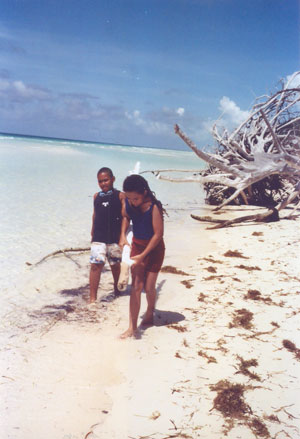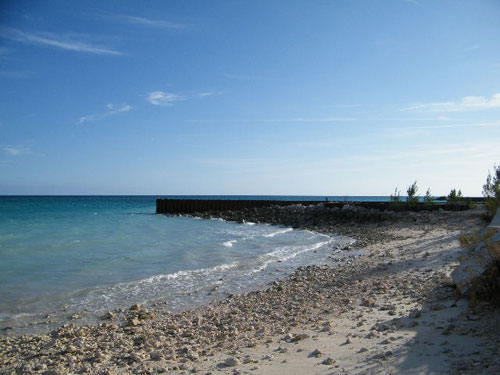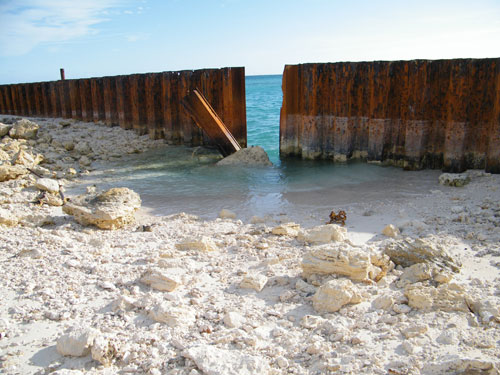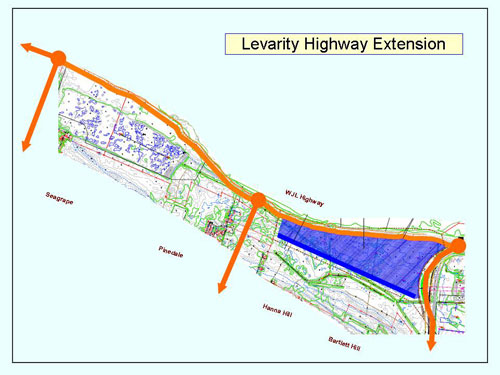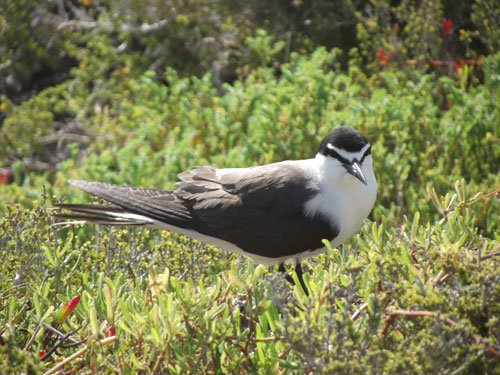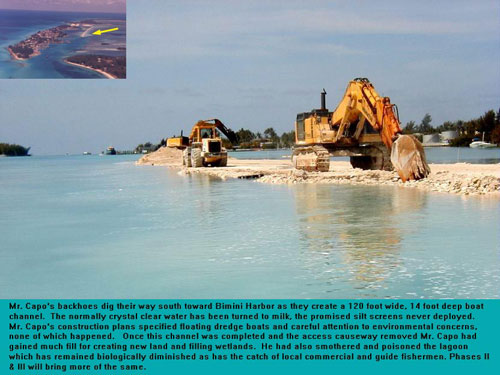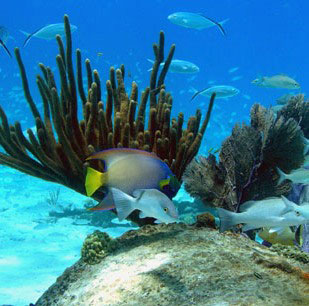|
From:TheBahamasWeekly.com Grand Bahama
Freeport, Grand Bahama - Enclosed is a speech to the Rotary Club of Lucaya by Gail Woon, member of the Sustainable EcoTourism Committee, member of the Coastal Awareness Committee and Founder of EARTHCARE 17th April, 2012. Coastal Awareness for the Northern Bahamas Speech By Gail Woon, member of the Sustainable EcoTourism Committee, member of the Coastal Awareness Committee and Founder of EARTHCARE 17th April, 2012 Good afternoon, The Ministry of Tourism asked me to come this afternoon to talk to you about Coastal Awareness month. The Honourable Prime Minister, Hubert Ingraham has declared April Coastal Awareness month and also has rung the bell for election on May 7th. The Bahamas has signed on to several International Conventions related to the environment. In 1992, The Bahamas Government signed the Convention on Biological Diversity recognizing the importance of marine biodiversity and the need to develop mechanisms for the sustainable use of coastal and marine biological diversity.In June, 1997 The Government of The Bahamas signed the RAMSAR Convention which provides for the protection of wetlands including shallow coastal and marine ecosystems. There are 5 threats to coastlines highlighted by the National Coastal Awareness Committee.
CLIMATE CHANGE Scientists have determined that the planet is going through a warming period. One of the main causal agents for climate change is the increase in the release of industrial and automotive gas effluents into the atmosphere. The predicted effects of climate change are 1 Sea level rise 2 Changes in rainfall and weather patterns 3 More intense and frequent hurricanes 4 Changes in patterns of ocean circulation
5 Increased
atmospheric and sea surface
Temperatures The Bahamas marine environment, particularly coral reefs are very important to the economy of this country. We depend on coral reefs for recreation, for the tourism industry, and commercial fishing. The coral reefs assist in generating millions of dollars into our economy each year. Increasing temperatures and sea level rise are having serious impacts on our coral reefs. Reefs act as our first line of defense against storms and floods. They support amazing biodiversity, grouper, conch, crawfish, snapper to name a few. When the seawater gets too warm for too long corals release the microscopic microalgal cells that live symbiotically within their tissues. This gives the coral a bleached appearance. When high temperatures are sustained the coral becomes susceptible to diseases and may even die. We have documented several coral diseases off of Grand Bahama Island that are directly related to warming events.
Prior to the 1980s bleaching events were relatively rare but in the last 30 years they have become more commonplace. Do any of you remember the long spined black sea urchin, Diadema, that used to be abundant on all of our shallow water areas when I was growing up? They were almost wiped out in the 80s by the warm water coral bleaching periods. WHAT YOU CAN DO 1 Use CFL bulbs. 2 Drive less or drive fuel efficient cars. 3 Turn off lights and appliances when not in use. 4 Support alternate energy sources. 5 Plant trees. 6 Recycle more. 7 Check tires. 8 Use less hot water. 9 Avoid products with a lot of packaging. 10 Adjust your thermostat. 11 Turn off electronic devices will save 1000s of lbs of CO2 per year. Another threat to coastal areas is
OVERFISHING Is occurring all over the world’s oceans. Some scientists have predicted that if we keep fishing at the rates we are currently extracting marine resources that world fisheries will disappear globally over the next 50 years.
That cheap fish sandwich that you pick up at the drive through is not that cheap. A few short years ago the fast food chains were touting a “new” fish called the orange roughy. It was native to New Zealand. A deep water fish it was not too pretty but they found an abundance of this fish in certain areas. The gold rush was on and everyone wanted to feature orange roughy on their menu. They even gave it new names and marketed it so cleverly that you probably did not even realize you were eating orange roughy from New Zealand. Well, the slick marketing worked wonders. The fishermen made a killing. The restaurants were happy. Then the bottom fell out. The sizes of the catch got smaller and smaller. I mean the individual fish caught were smaller and smaller. Then the actual size of the total catch per day got smaller and smaller until it was no longer profitable to fish for orange roughy. They fished the fish until the stock of orange roughy collapsed. They fished until they almost caught the last one and paid no attention to the life cycle or the time it takes for orange roughy to reproduce and grow again to marketable size.
Although our fisheries have not been managed well over the past 50 years, the Bahamas is one of the Last Stands for Queen Conch and Nassau Grouper. I went on an expedition to the Dominican Republic to learn about the humpback whales. I was astounded to see reefs and marine habitats totally devoid of edible fish and conch. We had children to feed on the expedition. We thought we would be able to catch enough fish to feed everyone. We ended up having to send someone in to the D.R. to buy chicken and meat so we could feed the kids! We, as a country need to embrace some of the fisheries management techniques used in other countries in order to preserve what is left of our once abundant fisheries resources such as elimination of certain types of fishing gear, expansion of closed season, limited access, and most importantly enforcement of regulations.
THINGS WE CAN DO 1 Obey fishing regulations, size limits, gear restriction, closed seasons. 2 Harvest only adult conch with well formed flared lips. 3 Catch only as much fish as you need. 4 Do not catch spawning fish as you will limit their capacity to reproduce. 5 Respect boundaries of marine parks and reserves. They act as replenishment zones for fish conch and crawfish. 6 Protect our wetlands, they act as nurseries for commercially important Species. 7 Protect coral reefs which are more productive than agricultural farms acre for acre. 8 Support the Dept of Marine Resources and non governmental conservation agencies.
HABITAT DESTRUCTION Is another coastal threat. Sad to say, The Bahamas has not done a great job of minimizing habitat destruction. The “anchor projects” that were once pushed by one of the previous Governments are a great example of Unsustainable Development. We know that jobs are needed and many of them however the sheer size of these projects would have inundated some of the islands they were planned for and would have changed their quaint “island” flavour forever not to mention that many of them would have become gated communities where the expatriates would have outnumbered the indigenous Bahamian population. Just take a look at once was the healthy, extensive mangrove nurseries of Bimini that charmed the late Martin Luther King Jr. and you will see a disaster occurring before your very eyes. Already scientists have reported a significant reduction in the larval (baby fish, crustaceans, mollusks etc.) recruitment in and around the islands of Bimini. Their natural habitats, acres and acres of vibrant mangroves have been bull dozed and dredged to make a playground for second home owners. The likelihood of damage from storms and hurricanes is greatly increased when clear cutting land, mangrove, wetland areas contributes to coastal degradation. In 2000 it was announced that North Bimini would be the first MPA or Marine Protected Area for the country. In 2008 the MPA was officially announced however, to date it is still not finalized. Biminites do not know the boundaries or the rules that would be in force re the MPA and enforcement is lacking. The developer is stripping away the mangroves at an incredible rate while Government is failing on the oversight of the project that they promised. On Grand Bahama, everyone remembers the huge production of the Pirates of the Caribbean II and III movies in 2005/2006. Here, unfortunately we have an example of how not to do a project involving habitat destruction. A “tank” was created to accommodate the filming. A square was cut out of the coastline, dredged to 25-30 feet deep, to install a gable system that would enable the film crew to rock the large pirate ship from side to side for a particular scene in the film. Local companies were not able to complete the work within the deadline so Disney brought in two dredging companies to complete the tank. The problem is an EIA (Environmental Impact Assessment) was not done before the work was started. After the work started and residents near by complained a cursory EIA report was done but as far as I know it was not posted on the BEST Commission website for public review. By then the damage was being done and continued. 7 years later the Bahamian and second home owners are suffering. The beach is strewn with rocks so much so that they have to wear shoes to go swimming. Soft corals and hard corals are dead from the siltation; covered in an inch of silt. I snorkeled the reef east of the tank where the residents live in 2010 and witness the dead corals myself. The remnants of the tank are disintegrating. The ocean is reclaiming the fill that was put on the land because the tank was never bulkheaded properly. Also on Grand Bahama moving west, Martin Marietta Bahama Rock has been harvesting our land literally. Enlargement of the harbour is completed and their plan is to advance their operation to cross the Warren J. Levarity Highway into the community of Eight Mile Rock. Residents there and in Queen’s Cove complained for years of the damage to their homes and to the wetlands to no avail. Recently Government commissioned a report that has come to the conclusion that MMBR is responsible for hundreds of thousands of dollars of damage to homeowners in the affected areas. This report has not been released for public review as yet. In Abaco the court case regarding the Wilson City power plant is another example of what not to do. BEC is being accused of blue hole destruction and not engaging in proper public consultation with stakeholders as well as starting a project without the government issued permits in place. Abaconians have let Government and BEC know that they want their energy as sustainable as possible and that they want to be consulted before huge projects like Wilson City Power Plant or Baker’s Bay Development on Guana Cay are begun. POLLUTION/MARINE DEBRIS Which is a subject close to my heart. EARTHCARE has been participating in and supporting International Coastal Cleanup Day for the past 24 years. Marine Debris is trash that gets into the marine environment due to careless handling or disposal. Buoyancy, and ability to be blown around affect how easily trash becomes marine debris. The time it takes to degrade dictates how long it will remain in the marine environment. Marine debris includes all the objects found in the marine environment that do not naturally occur there such as plastic, glass, rubber, metal, paper, wood and cloth. Entanglement and ingestion are problems caused by marine debris. Marine Mammals, turtles, birds, fish and crustaceans all have been entangled in or have eaten marine debris. Most of the species most vulnerable to the problems associated with marine debris are endangered or threatened species. About 100,000 marine mammals die each year from entanglement or ingestion of marine debris. All of the 5 species of sea turtles found in the Caribbean are endangered and all have been found entangled in different types of marine debris like fishing line, rope and nets. Nearly one million seabirds are thought to die from entanglement or ingestion of marine debris annually. All seabirds are now considered endangered due to mainly longline fishing killing many out at sea. An aluminum can takes 200 to 500 years to decompose in the ocean. Here are some Boater tips for keeping our coasts clean: 1 Stow loose items, plastic bags and cans so that they do not blow overboard. 2 Carry trash bags and never throw your garbage overboard. 3 Whatever you take out, bring back! 4 If recycling facilities are available use them. 5 Encourage your marina to provide recycling bins and trash bins. 6 Never discard fishing line overboard. 7 Avoid taking plastic products on board, such as six pack rings and bags that are harmful to marine animals, can damage boat props, clog intake valves and litter beaches. INVASIVE SPECIES In 2007 the Grand Bahama Coastal Awareness Committee under the leadership of Fred Riger targeted the removal of an invasive species, Casuarina, Australian Pine. Many volunteers worked tirelessly that year from April through December to remove Casuarinas from our Lucayan National Park. Native vegetation was planted in place of the Casuarina. Invasive species are all over Grand Bahama. Many are doing so well that we have grown to think they are native but they are out competing the indigenous plants and animals, e.g. raccoons, Brazilian pepper or Florida holly, rats to name a few. Exotic dune plants tend to overgrow native plants species and are less effective in maintaining the dune ecosystem such as the Hawaiian Scaevola. A relatively new invasive species is the venomous lionfish from the Indopacific. All of the fins contain venom which causes severe pain swelling and numbness and occasionally respiratory distress, muscle weakness or temporary paralysis. Lionfish are carnivores who compete with our commercially important fish for food. Analysis of gut contents revealed juvenile Nassau Grouper so they pose a direct threat to our grouper and other finfish stocks as well as crustaceans and mollusks. With few if any predators lionfish populations have increased. Breeding females have been caught in our waters each bearing up to 20,000 eggs per spawn. They have been found to spawn every four days. High reproductive rates and lack of predators allow the lionfish to outcompete native marine species. We must encourage a commercial fishery of lionfish in order to help keep their populations in check. At the recent AgriExpo my Uncle, David Rose and his daughter, Sam were demonstrating how to prepare and cook lionfish. Their samples went quickly and were very well received. Ballast water that comes in ships from other countries/regions poses a danger in that the creatures that are non-native can stay alive in the ballast water. Most ships once they reach a destination release their ballast water. This can pose a chance for introducing invasive species into our waters. We should look for ways to remove potentially damaging living creatures from the ballast water before ships are allowed to release it into Bahamian waters. My Uncle, David Rose, has done commercial diving in and around the harbour and has come across a borring mussel native to the Red Sea and the Mediterranean Sea living in the harbour in Freeport. There are probably more invasive species there that have not been detected yet. You can help by 1 Aquarists should avoid non-native species and take care to prevent their release or escape. 2 Take measures to prevent the release of pets into the wild as they may become a threat to our native species. 3 Purchase native plants such as cocoplum and sea grapes for use in landscaping. 4 Remove invasive species from your property. If I have left you with nothing else please keep in mind every little thing that you do has an impact. The impact will be felt by our children and their children. What sort of world do we want to leave to our kin? Let’s join together and see that our kids have a bright future with sustainable resources that they can hand down to their children and their children’s children. Thank you for inviting me and your valuable time.
|
